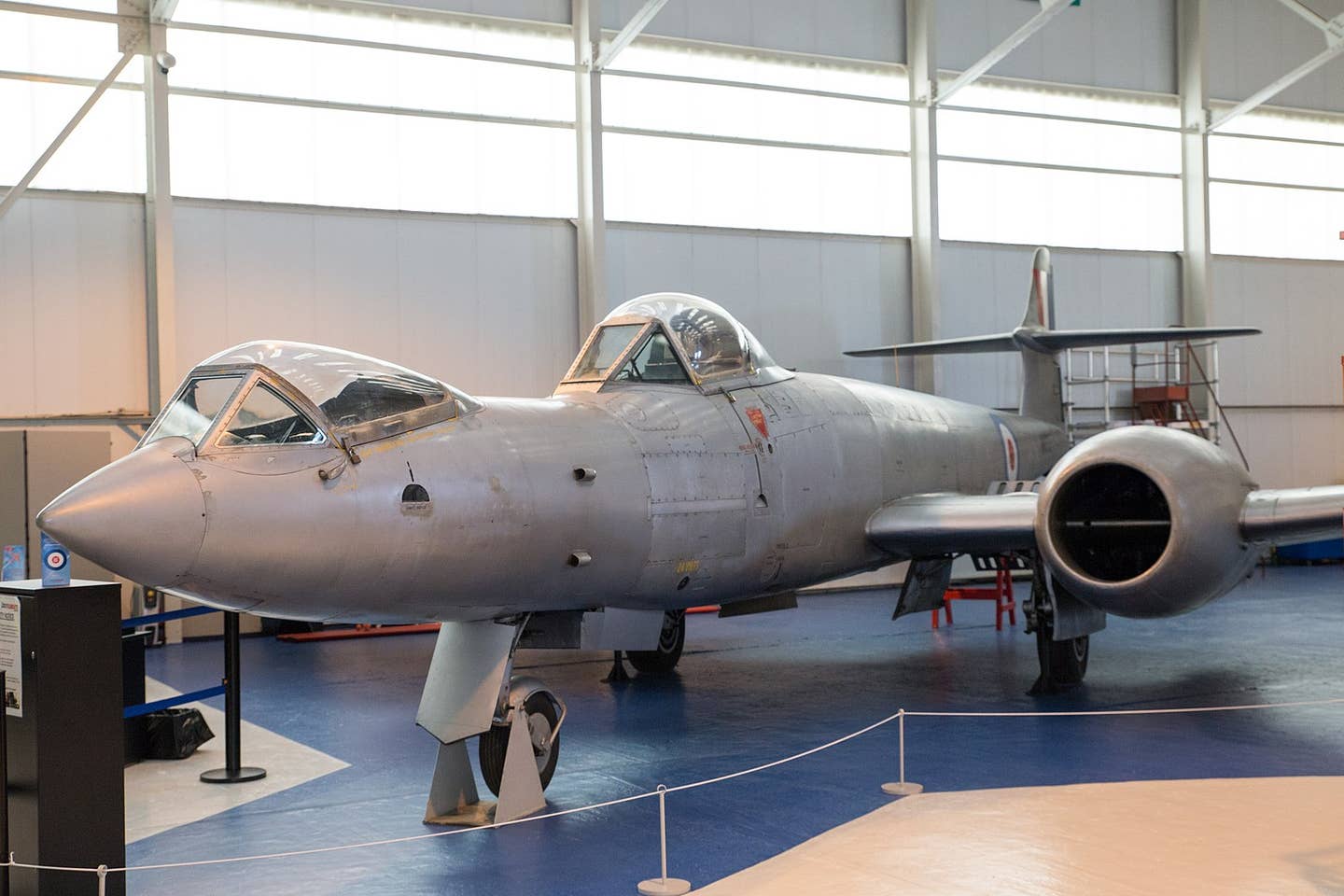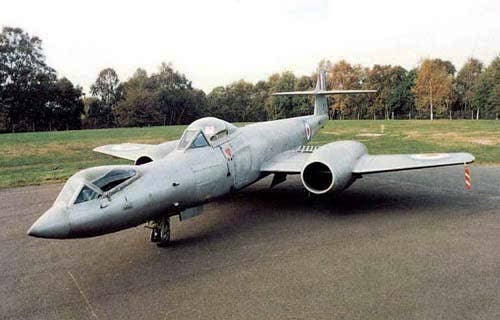
We’ve talked before about the Gloster Meteor, the only Allied jet fighter of World War II. Because Britain couldn’t risk the jets falling into enemy hands, they served only on the home front and mostly defended against flying bombs. But the British worked to get ahead of the rest of the world in the jet age, so they experimented with designs.
One wonky design, aimed at reducing G forces on pilots and friction on the plane, called for pilots to fight from their bellies in fast-moving jets.
The Prone Pilot Gloster Meteor

Multiple countries tried out planes with prone pilots, with the first being Germany’s Henschel Hs 132. The 132 had a jet engine above a prone pilot, but the Soviets captured the factory and prototype in 1945. The idea was to help pilots stay conscious when experiencing high g forces.
The Allies experimented after the war, and the Royal Air Force made their elongated Meteor in 1954. The WK935 had two cockpits. Basically, it was a normal Meteor with an additional cockpit and controls welded onto the front. So a prone pilot laid in the nose, and another pilot sat in the normal cockpit to back him up in case there were issues.
Test pilots flew it for 11 months. This was before anti-g-suits, special clothing that helps pilots remain conscious at high g forces. And the test pilots were clear in their reports: the prone position drastically cut down on the g forces they experienced. And the tighter nose did allow for faster jet designs, in theory.
But it had drawbacks.

The issues with pilot couches
Pilots called it “the trussed chicken state.” It forced the pilot to look nearly straight ahead, greatly limiting situational awareness. And the machine was extremely uncomfortable in turbulence as the pilot was shaken against the couch underneath them.
But then the dynamic changed. Anti-g-suits got better and better. As they improved, they became the preferred method of fighting the g-induced loss of consciousness. Pilots wearing a g-suit could still look in all directions while also staying conscious.
While prone pilot still gave the potential for more speed, it wasn’t worth losing peripheral awareness.
Aircraft designers abandoned the idea, but it did show up in drone fights in Guardians of the Galaxy Vol. 2, for some reason.
